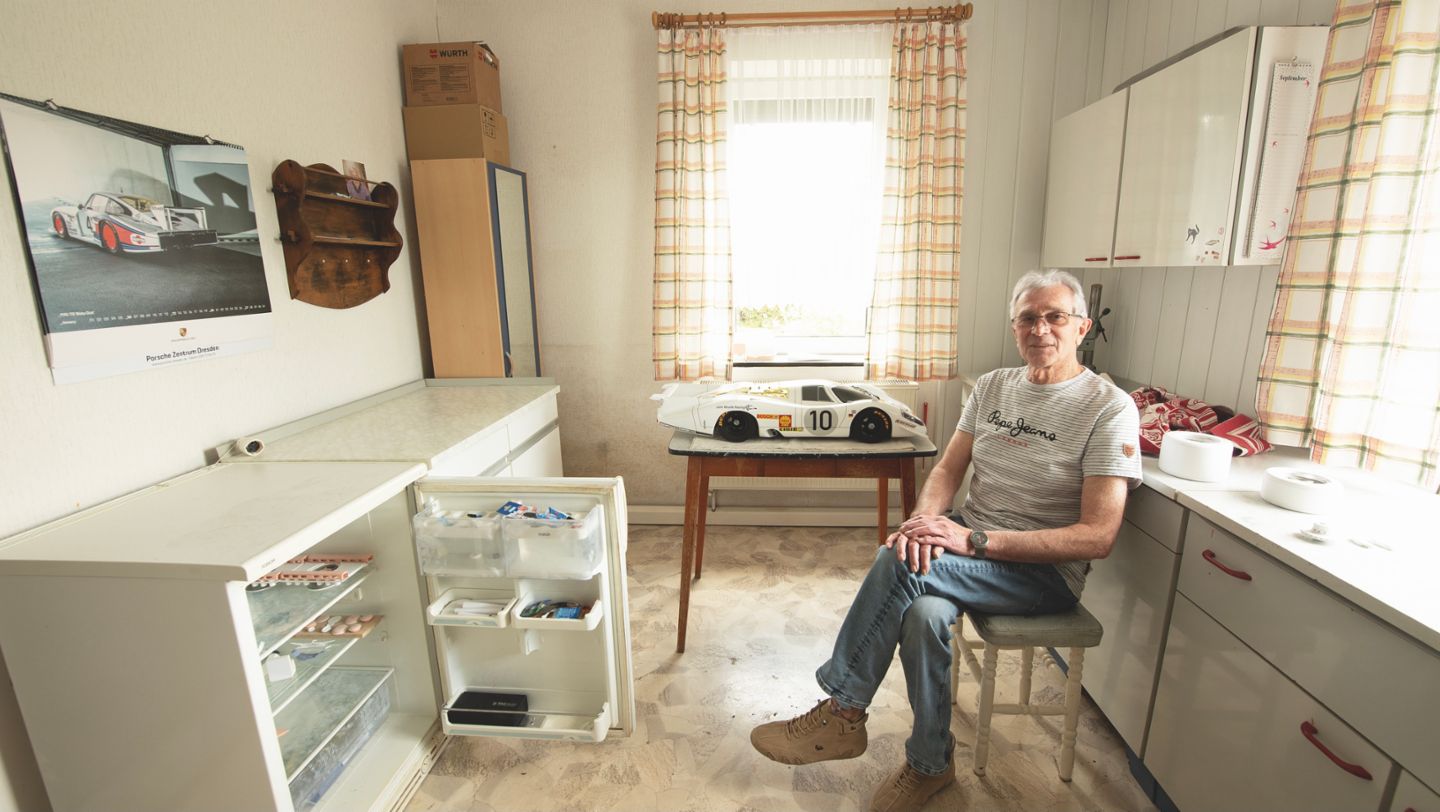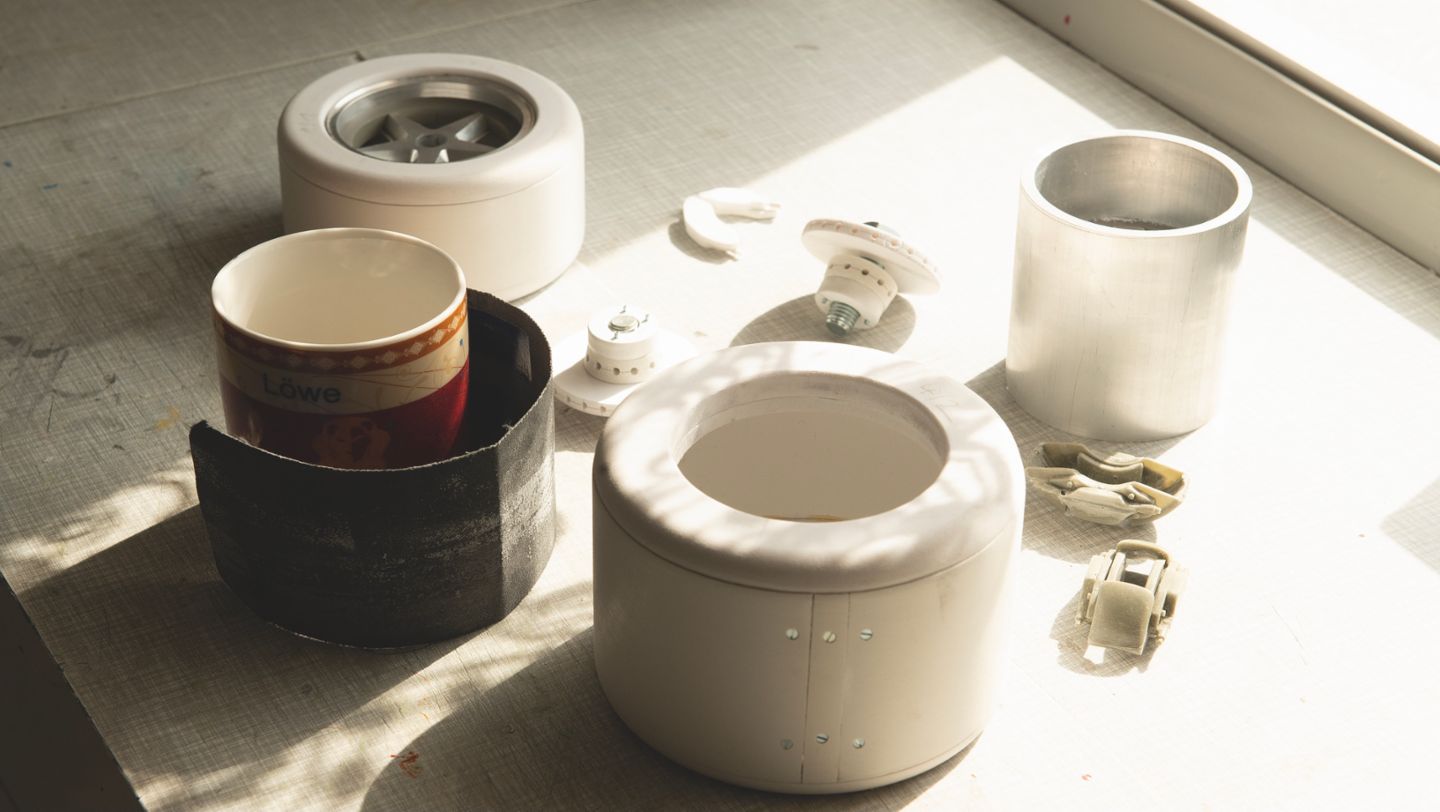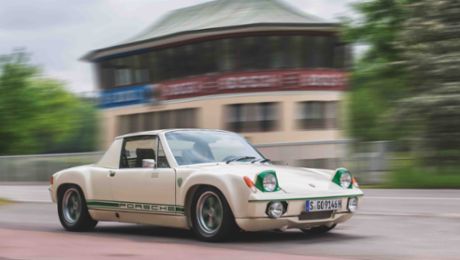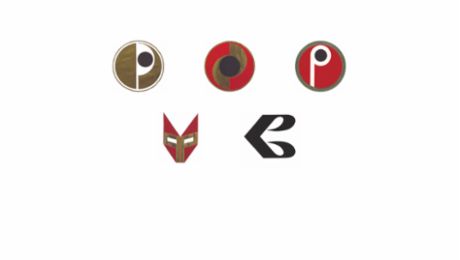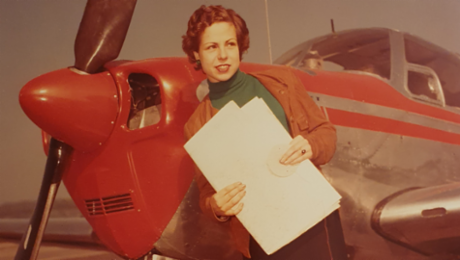Just imagine: it’s 1978 and you’re a Porsche fan living in East Germany, in the Lusatian Highlands alongside the triple border, close to Poland and Czechoslovakia. And you like racing cars. Then this puts you about as far away from your dreams as Porsche was from an overall victory at the 24 Hours of Le Mans in the 1950s. However, dreams can still come true. As we know, the overall victory at Le Mans didn’t come for Zuffenhausen until 1970. And Lothar Wünsche’s dream of coming face-to-face with a real Porsche racing car wouldn’t go unfulfilled either. This is because, in 1978, there was already a racetrack at Tvrzova 5 in Most, in the present-day Czech Republic. Getting there involved a trip of just over 120 kilometres for Lothar Wünsche, a – for him – manageable border crossing included.
“The rear of the camera car has a modified frame because of the two Arriflexes. I recreated this in my 1:5-scale model.” Lothar Wünsche
Two things the now 78 year-old had in abundance, even back then, were a talent for improvisation and patience. He reaffirms this latter quality: “We had learned how to wait. You’d have to wait 12 years for a Trabant!” When the Interserie was held in Most on 12 August 1978, Lothar Wünsche didn’t just pass the time walking around the grandstands. “I’d made up my mind that I wasn’t going to be shy! That’s how I happened to meet Jürgen Barth, who was responsible for customer racing at Porsche back then. That’s how everything got started.”
The East German fan was received cordially, and this wouldn’t be his last encounter with motorsport from Zuffenhausen. It’s hard to believe now, but in 1978 racing cars such as the Lola T286, McLaren M8, Porsche 908, Sauber C5, Chevron B31 and many others were in the starting line-up in Most. The winner, incidentally, was the world-famous TOJ SC302, piloted by Norbert Przybilla for AC Mayen from Germany.
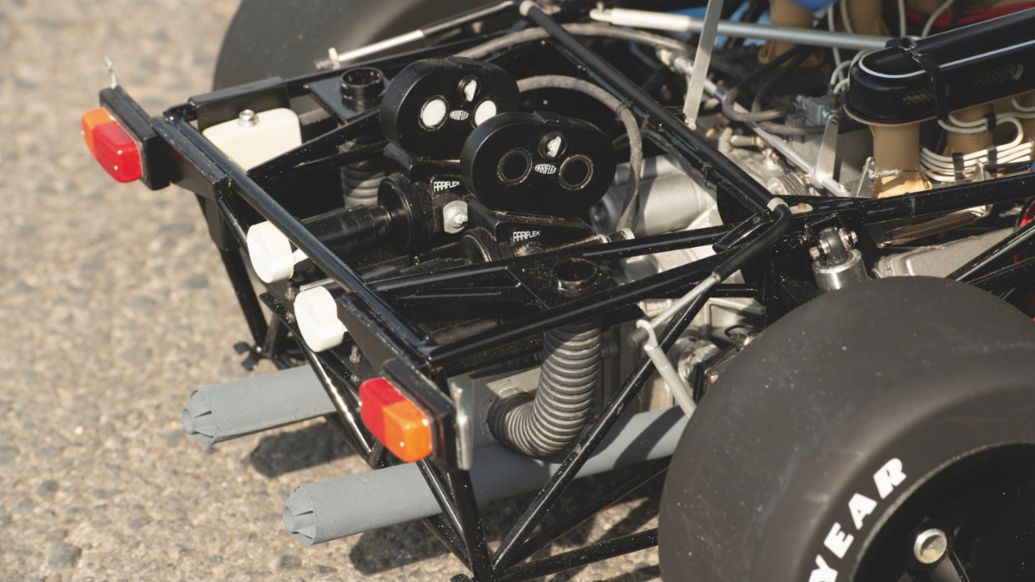
In 1978, Lothar Wünsche celebrated a very different victory: having got up-close to his dream Porsche and even meeting the people from the racing team behind it. From this moment on, he was fully focused on Porsche models. Which, of course, were rare in East Germany. So he would swap items considered valuable, exchanging them for others again and again until, sometimes, he might get his hands on a model of a Porsche. For instance, a Tamiya kit of the Porsche 935 in exchange for, say, six bottles of strong vodka.
Completely through his own initiative
But in 2007 came the radical step: “I didn’t want a display cabinet containing things that other people also had, so I decided to start building my own models on the same 1:5 scale that Porsche itself used for its wind tunnel models.” Wünsche has built more than 20 of these ‘huge miniatures’ to date. All completely through his own initiative. On entering his workshop, it’s hard to believe that these marvels consisting of up to 1,600 parts are created here. As Wünsche, a qualified fitter who assembled elevators for many years, says: “A pillar drill, a Dremel mini-drill and my jigsaw. That’s about all I need.”
Wünsche’s fleet of 1:5 cars is breathtaking. The oldest Porsche that has been created as one of his models is the 550/1500 – the Number 25 1956 RS Coupé, which finished fifth at Le Mans. Also represented in shimmering silver is the Number 32 Porsche 904/6, in which Herbert Linge and Peter Nöcker took fourth place on the same circuit. It is followed by: the Number 58 Le Mans Carrera 906, seventh in the race in 1966; the Number 27 908/02 long-tail from 1970, third in the race at La Sarthe; and the world-famous camera car, a 908/02 in blue, which carried the race number 29. This last car recorded scenes for the Hollywood film Le Mans, with Steve McQueen. This 1:5-scale model is the most detailed, containing more than 1,600 parts and even an opening rear engine cover.
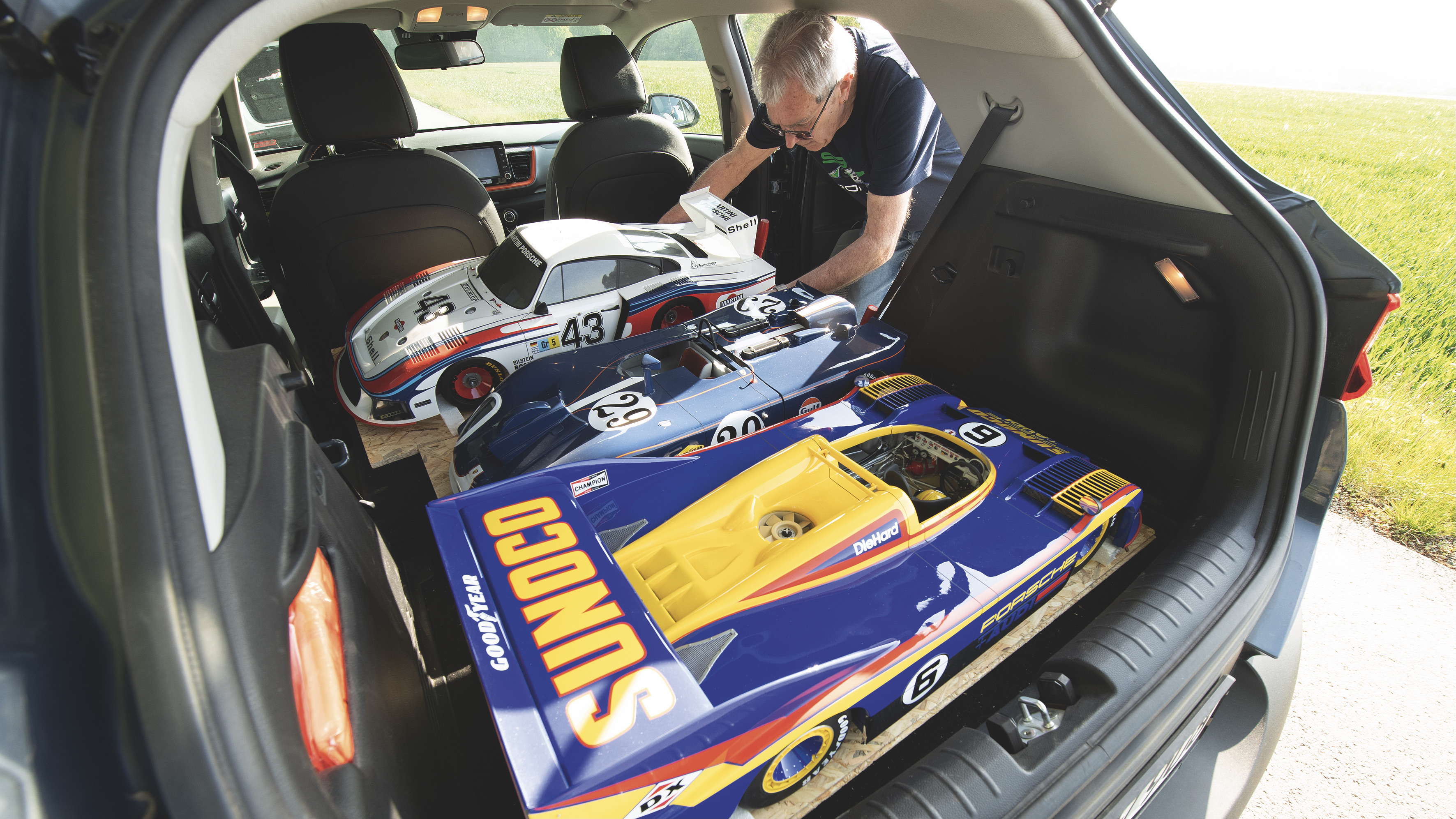
The starting line-up of 917 models is a big one. Alongside Herrmann and Attwood’s winning Number 23 car from the 1970 Le Mans, Wünsche has also built a miniature of the second-placed Number 3 Langheck (long-tail) from the same race. The pre-test Number 21 long-tail from 1970 is also on show, as is the crashed 917/20, the Pink Pig from 1971. Other Le Mans participants are the Number One Porsche 944 LM GTR from 1981, the Number 43 935/78, the TWR Porsche WSC 95 that won in 1996, and the Porsche 936/77 that won in 1977. From the CanAm series, there are the Number 7 917/10 (overall winner in 1972 with George Follmer) and the 917/30 (overall winner in 1973 with Mark Donohue).
And the line-up continues to grow
Soon to be completed is John Woolfe’s white 917 long-tail. Another project has also already advanced a long way. Wünsche showed us the completed chassis: “This contains around 20 metres of plastic pipe.” Perhaps the basis for a model of the long-time distance record holder at Le Mans and winner in 1971: the Martini Porsche driven by Helmut Marko and Gijs van Lennep? Wünsche’s smile says it all! We’ve already got to know him a little.
The maker of these high-quality models creates the body shapes all by himself using the negative-positive technique – a building system for frames that he fills with a special plastic and then grinds until the surfaces are perfect. While he makes all the parts himself, even the wheels, Wünsche gets help for the decoration. “It’s simply not my thing. Steffen, a local body painter, applies the paint perfectly, and Elisabeth, a commercial artist, makes the decals for the decoration, which I then apply.” Even Wünsche needs a team – he couldn’t have built any of his 1:5-scale miniatures alone.
“Manual transmission, of course: for me there’s no discussion”
Another of Wünsche’s dreams also came true, namely meeting Erwin Kremer from the eponymous racing team during his many visits to the track: “I was at Le Mans many times for Kremer,” he tells us, “as a tyre fitter.” And that’s not all. Wünsche’s own garage is now home to a Porsche Cayman GTS 4.0 (718 Cayman GTS 4.0: Fuel consumption* combined (WLTP) 10.9 – 10.1 l/100 km, CO₂ emissions* combined (WLTP) 247 – 230 g/km, CO₂ class G ) in bright red. Wünsche: “Manual transmission, of course: for me there’s no discussion.”
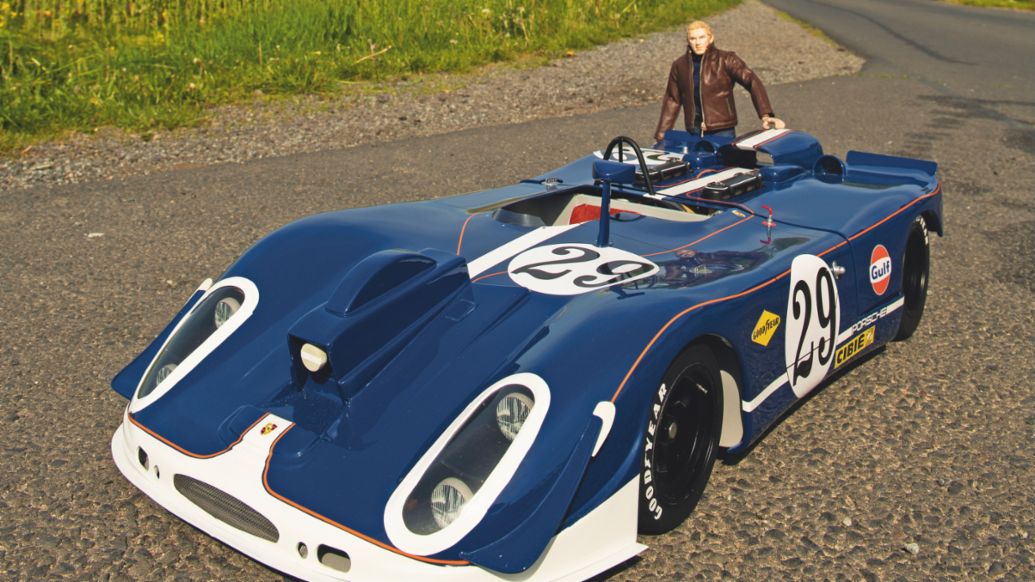
A closer look at the model of the 908.022 film car reveals just how true to life Lothar Wünsche’s work is. In the blue car that wore number 29 at Le Mans in 1970, Herbert Linge and Jonathan Williams deployed three Arriflex cameras to record the fantastic race scenes for the ‘Le Mans’ film with Steve McQueen. A small cream-coloured box, on the right in the area of the door, is the first 1:5-scale secret. Wünsche the expert: “This was used to control the cameras. I even put the original lettering on it.”
As the expert shows us details in the rear of the car hidden under the opening engine cover, he starts to chat again: “Because of the two Arriflexes, the camera car had a modified rear frame. For the cameras, I researched the type and dimensions at a film school.” This wasn’t so straightforward. Background: because these were prototype cameras from Arriflex that were still a closely guarded secret in 1970, no photographs were allowed to be taken while the film was being replaced in the box. When dealing with details such as this one, Lothar Wünsche sometimes exhibits an instinct reminiscent of Sherlock Holmes.
The dream and his hobby have made Wünsche very happy, and this is something he appreciates: “I’ve met so many interesting, nice, loveable, crazy people who helped me. That’s almost a better thing than my armada of 1:5-scale models in my display cabinet at home.” A man who knows what counts.
Info
Text first published in the magazine Porsche Klassik 28.
Author: Andreas A. Berse
Photos: Markus Bolsinger
Copyright: All images, videos and audio files published in this article are subject to copyright. Reproduction in whole or in part is not permitted without the written consent of Dr. Ing. h.c. F. Porsche AG. Please contact newsroom@porsche.com for further information.

